After last week’s article praising the E46 base model, I’m sure you’re already thinking I’m crazy. This week, there’s more weight to that claim because I’m about to sing the praises of the MK5 GTI. Yes, the often forgotten middle-child of the GTI family is the focus today. I’m here to tell you why it’s about to be the next hot-ticket VW in the scene and convince you that a MK5 GTI is just what you need for your next project car for 2023.

Why Not Newer?
First, let’s compare it to its older and younger siblings. The MK4 in recent years has experienced something of a resurgence in popularity, likely thanks to the MK4 R32 that has become Volkswagen’s unobtanium. With scene kids tripping over themselves to put a modern spin on the now aging platform, the days of $500 MK4s are long gone. If you can find a running and driving GTI of that generation, especially in decent shape, you’re going to spend more for less.

That brings us to the newer generations, namely, the MK6. If I’m being honest, the MK6 is my all-time favorite of the GTIs. It’s basically a better looking MK5 from the factory. But I’m not here to sell you on the merits of a facelifted MK5. I’m here to tell you why you don’t need to spend double the money on something that only looks better in factory form. Yes, the MK6 inarguably looks better unmolested. But who wants a stock GTI for double the price of one you could have well-modified for the same money?
The cost-benefit analysis there is what lands me on the MK5. It’s right in the sweet spot we identified last week of being just modern enough to avoid the “classic” tax and not new enough to still be considered valuable. Much like the E46, the MK5 GTI is traditionally the least-loved of the family. These factors combine to give you a fantastic car that can be affordable at nearly any budget and is supported by an extremely well-established aftermarket performance segment.
The MK5 GTI’s Benefits

Since its debut, the MK5 GTI has strayed from the spotlight. I remember the funky commercials VW put out when the MK5 was launched, the way the Top Gear boys sang its praises, and the fun special-edition Fahrenheit versions that VW produced to let us know it was still a “fun” car brand. But just as quickly as it allowed VW to rejuvenate their image, the MK5 left the scene and was replaced by the MK6 and later MK7. Likely due to the overall affordability of the cars when new, the popularity of the previous model just doesn’t have any staying power. It has to go a few generations before people seem to remember how cool it was then and how much has become available for it now. Well, we’re at that crucial point and if you don’t jump on the MK5 GTI train now, you’re going to miss out. Let’s discuss.
The MK5 GTI offers a 2.0T FSI engine paired to an available 6-speed manual transmission and could be had as a two or four-door hatchback. Much like the previous GTIs, it is designed to be a fun “do-it-all” daily driver that provides exciting commutes and practicality. What made it good then makes it great now, as cars are becoming bigger, more expensive, and more technology-dependant. The MK5 GTI sits right there on the cusp of modern technology, where it benefits from mechanical dependability, but isn’t burdened with all that special trick-technology that makes it difficult to maintain. As such, the MK5 is something that can reliably take you to and from work, to the store, and to the backroads for some fun without worrying that you’re going to have to pay someone an arm and a leg to fix it.
Maintenance Concerns
However, we don’t want to breeze past those mechanical needs. While it can certainly be considered reliable, there are two areas that need to be regularly serviced for it to remain that way. First, as you’ve probably already heard about, the original 2.0T FSI engine design featured a cam follower that required regular replacement or would otherwise become a time-bomb in your engine. While that may seem scary, it’s an easy enough job that should be done every few oil changes and is even featured in our MK5 GTI service kits that include everything you need to do it yourself with ease. Fear one, abated.

The second fear is a bit bigger, as it is more of an involved job, but not one that needs to be as regularly attended to as the cam follower. The original 2.0T FSI featured a timing belt, while some of the last models imported during the bubble years as VW transitioned to the MK6 platform featured a timing chain. If you have a FSI engine, you have a timing belt. That timing belt will need to be replaced regularly to avoid catastrophic engine failure. That said, the timing belt job isn’t the worst thing you can do alone and again, we have a full timing belt service kit that will help you do it from the comfort of your garage from start to finish.
With those two concerns out of the way, there isn’t anything beyond regular service that the MK5 will require. So we know it’s reliable, but what about fun in the modern age? Why land on the least-loved of the GTIs that has two big Achilles’ heels? Two reasons. First, it’s affordable for what you’re getting. A nearly 200hp, 6spd manual, with plenty of room for activities that doesn’t look half bad out of the box is a great purchase. That’s perfectly relevant on today’s roads and still looks contemporary enough to keep people from mentioning how they ‘haven’t seen one in years.’
Second, the aftermarket support and information to keep these cars going forever is abundant. The MK5 platform has been with us long enough to become widely documented inside and out, making every maintenance or upgrade you’d want to perform easy to gather information about before you get started. Hell, I’ve written plenty of articles right here on this humble little blog about many of the popular services you’ll need to complete at some point with your MK5. For the aftermarket performance stuff, that catalog is about as big as any of the popular performance platforms out there. Seriously.
Just to name a few of the popular upgrades, let’s take a look at what you’d want to do to bring your MK5 GTI into the future and keep it turning heads while you sit back and enjoy the fact that you can do it all for under $10,000 (more or less.)
Engine Performance
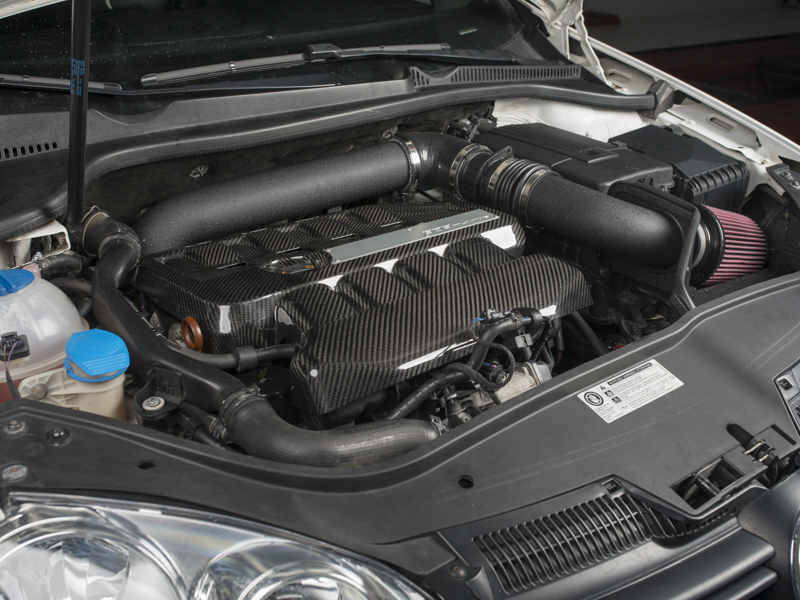
Since we’ve had a MK5 in our collection since its debut, there are almost no stones left to overturn. You can truly build a 2.0T with upgraded, well, everything. But we’re on a budget here. If we want to stay under that $10k mark for the total build, you’re going to want to be around $1,000 in each area of upgrades for a well-rounded mid-tier build. The ECS Luft-Technik intake, or similar designs from other brands, a front-mount intercooler kit, and blow-off valve are all you need to make some fun noises and gain a few horsepower. You can get all that in our in-house designed lineup of MK5 GTI engine performance upgrades. However, if you want to allocate all your funds to going fast, you could always sink your total budget into some serious power. K04 turbo conversions are about $1,500. Running some upgraded head studs, an upgraded intake manifold, and the proper software, your 2.0T can make well into the 350+whp range all for under $10k including the car. Though, you won’t have any budget left for suspension, wheels, tires, and visual changes. So, if you want to have a sensible, well-rounded build, read on.
Drivetrain
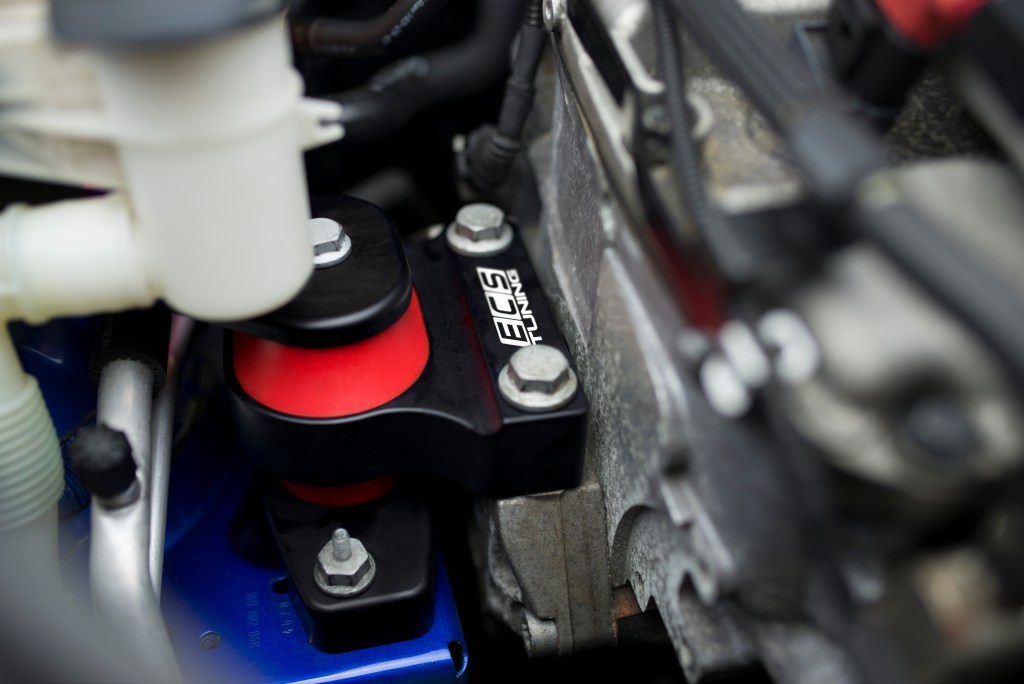
Making more power is great, but being able to use what you already have offers a similar and more efficient alternative. We all know engine mounts, transmission mounts, and suspension bushings play a big role in noise, vibration, and harshness damping. They’re made of soft rubber for that reason. That NVH damping increases the amount of slop, called deflection, when your drivetrain is under load. Upgrading the pendulum mount, engine mount, and transmission mount are a popular trio of improvements to bring much of the driveline deflection in check. We offer full kits or individual mounts from our in-house line and every reputable manufacturer out there. At a few hundred dollars for the set, you’re able to allocate a little more of your upgrade budget to the other categories.
Exhaust

MK5 2.0Ts are famous for their pop n’ bangs, which aren’t possible without upgrading the exhaust. Depending on how much you want to spend, there is an exhaust setup that is just right for you. However, if you want to maximize your spending on wheels, suspension, and tires, saving in other areas (especially if it’s just for the sound) is a good strategy. A resonator delete and muffler delete kit will give you a throaty tone and much of the upgraded exhaust benefits you’re after. However, if you really must go all-out here, a full stainless steel turbo-back exhaust is what you’ll want. Our modular exhaust system will let you configure every inch, from the turbo to the tailpipes, with exactly what you want. For anywhere between a few hundred to a couple grand, you can make a setup that is perfect for you.
Brakes
Again, you can go for style and jump on a brake kit that blows your whole budget. But you don’t wanna do that. Some upgraded rotors, pads, lines, and fluid is all you need to bring your brakes up to par with the moderate performance upgrades in the list so far. For under a grand, you can do all of that. Our stainless steel exact-fit brake lines, some performance brake fluid, and your choice of pads and rotors are a perfect combination. We like Hawk brake pads with our drilled and slotted rotor upgrades for a nice street performance setup that has a wide range of usability without sacrificing street functionality.
Wheels

Ah, the fun stuff! Things that make the GTI look *right*. Our rotary-forged Tekniform wheel lineup offers the perfect blend of styling, durability, lightness, and fitment all at an affordable price. The multi-spoke look and GTI-specific fitment make them a perfect choice for your budget GTI build that won’t make it look like a budget build. Factor in tires, and you’re around $1600 shipped for a decent setup all in. The wheels themselves are extremely affordable, which keeps us right in line with our overall goal of buying and building a decent MK5 GTI for under $10k.
Suspension

If I’m not mistaken, we’ve spent around $3,500, give or take, depending on how crazy you went in some of these categories. That leaves us just $1,500 to stay right on track. Fortunately, the ECS adjustable coilover systems only run about $750. Honestly, unless you’re really looking for the best handling improvements, these are all you need to feel some decent handling gains on the street and have the adjustability to set your ride height, damping, and comfort to your liking. They’re meant to look good and feel good. If you want true track performance, though, you can spend an extreme amount of money on track-ready suspension. Though, for our purposes, let’s just leave it at the mid-tier setup and get your MK5 GTI looking tough and feeling comfortable.
Interior
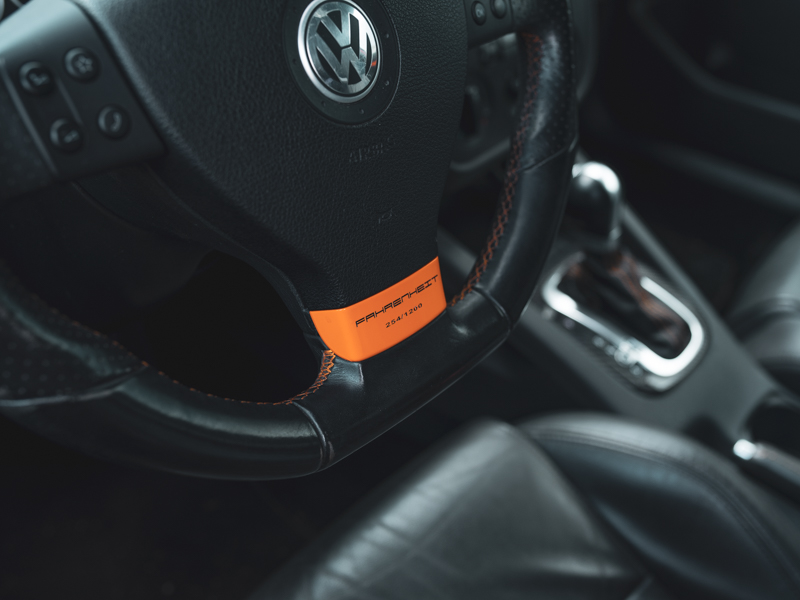
With just around $1,200 left in the budget, you’re not going to be able to make anything sex-spec in the interior, but you can still do some good here. We’ve done the hard work for you and made some affordable billet aluminum interior upgrades that give the cabin a more industrial and modern feel. The seat adjustment levers, handbrake, pedal set, shift knob, and climate control knob upgrades are all you need to bring the MK5 GTI into the future. All together, you’ll spend around half of your remaining budget.
Exterior

With the final touches left, and about $600 to go, you’re in a great spot. Our carbon-fiber rear hatch spoiler, gloss black front lip spoiler, and street shield skid plate are all you need to look a little more aggressive and survive out there with a static GTI. The front lip and rear spoiler combine to give the GTI’s egg-shaped body some more pizazz, plus scene points for the carbon look. The street shield underneath keeps your oil pan from becoming too familiar with the pavement or that parking stop you forgot to back away from. With a lowered GTI, you’ll definitely want to invest there. You could also go a bit over budget and grab an ever popular badgeless front grill for a sleeker appearance, but that’s all up to you. It’s your build, after all.
If my math is correct, that will leave you with enough money left for a tank of gas and maybe a sandwich, but for under 10k, with the right starting point, you can build a very stylish and certainly modernized MK5 GTI that makes all the right noises, is fun to drive, and will definitely turn heads. All on a budget. Done right, I think this is about to be where many folks in the VW and tuner scene in general start turning. Don’t be surprised if you start to see MK5 GTIs climb in price and start popping back up in parking lot meets with a similar build list and budget to what I’ve outlined here. Now, if I were you, I’d be out there on Autotempest looking for the right GTI and start budgeting for your buildout. If you follow this guide, you’ll be right there with the best of them during what I predict will be the MK5 GTI’s renaissance here in 2023 and the coming few years.

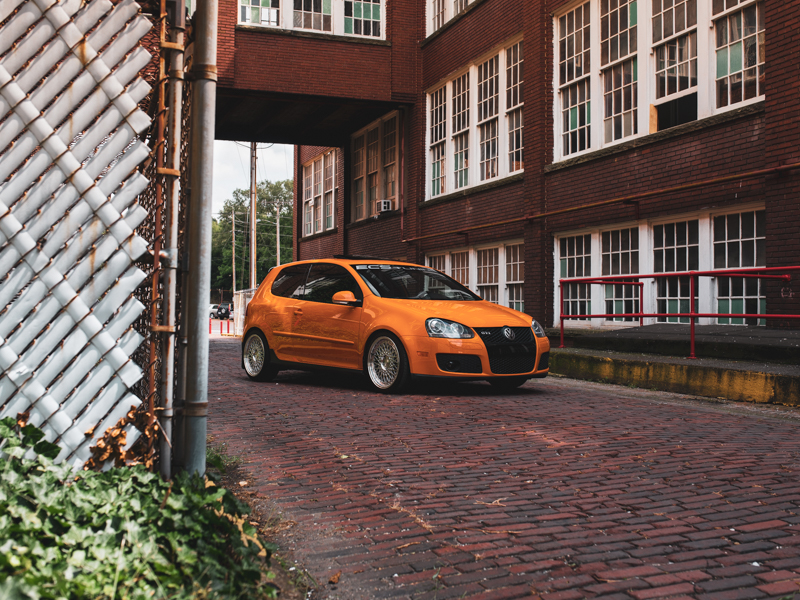
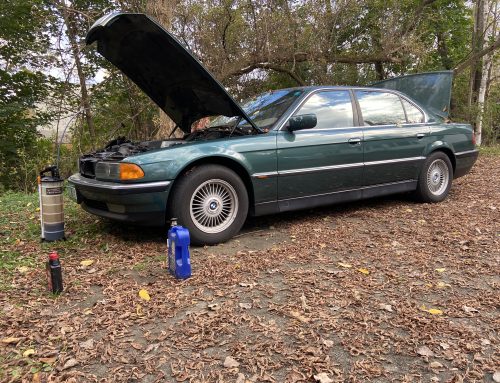



I cannot agree more about everything said here. I miss my 2006 GTI everyday.